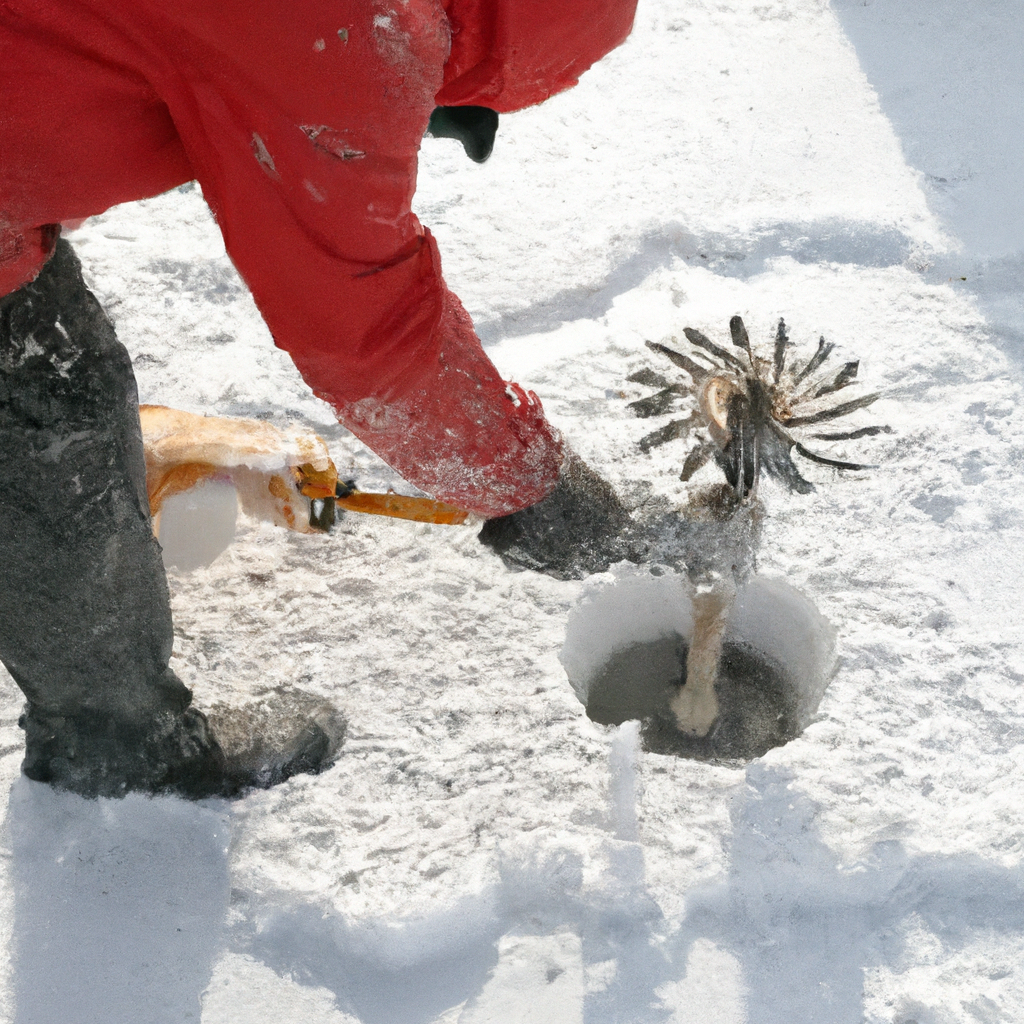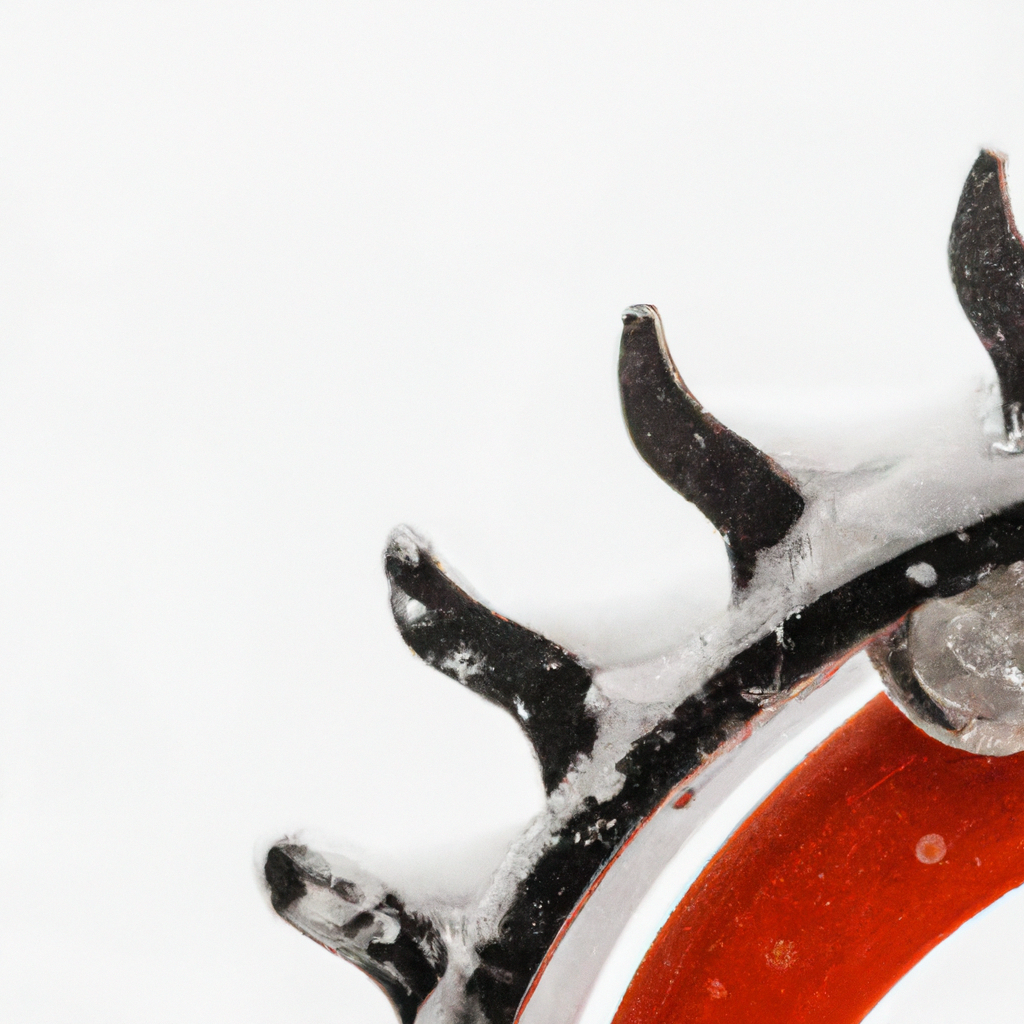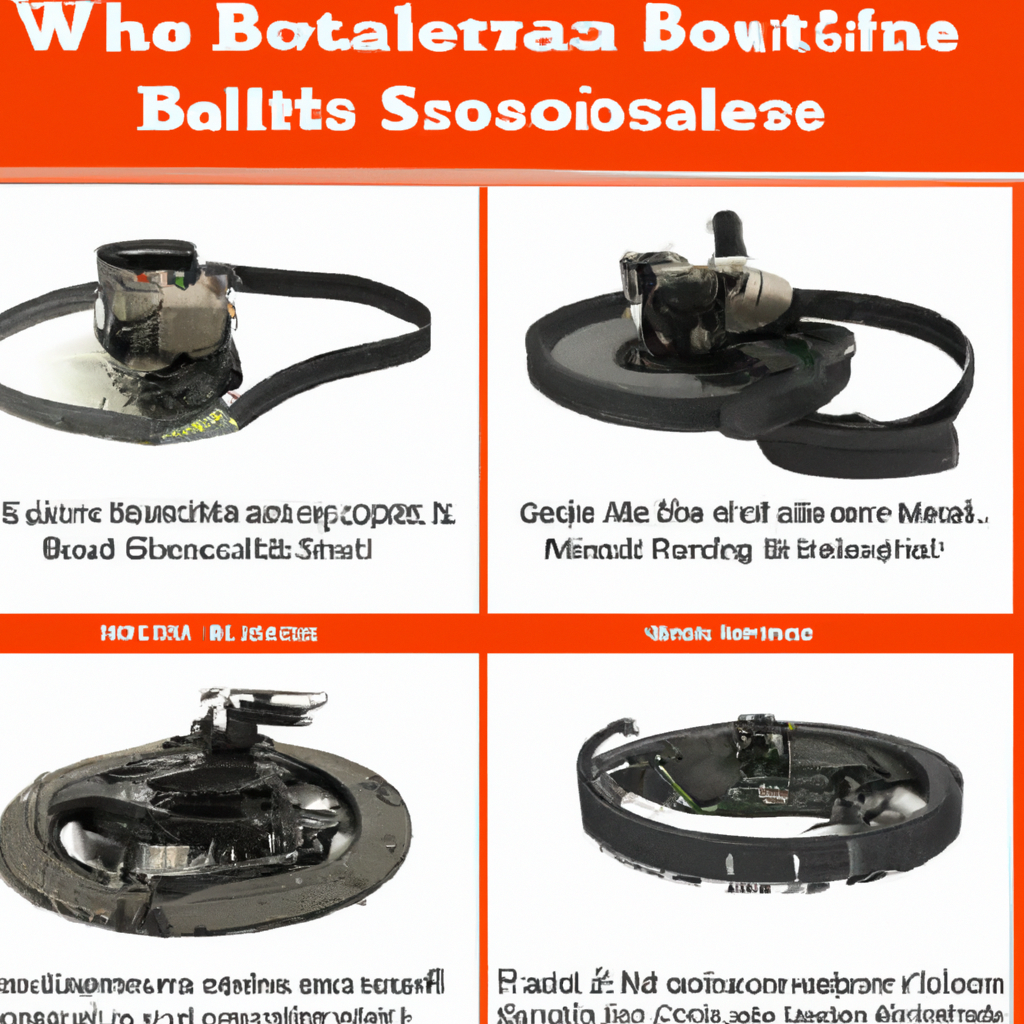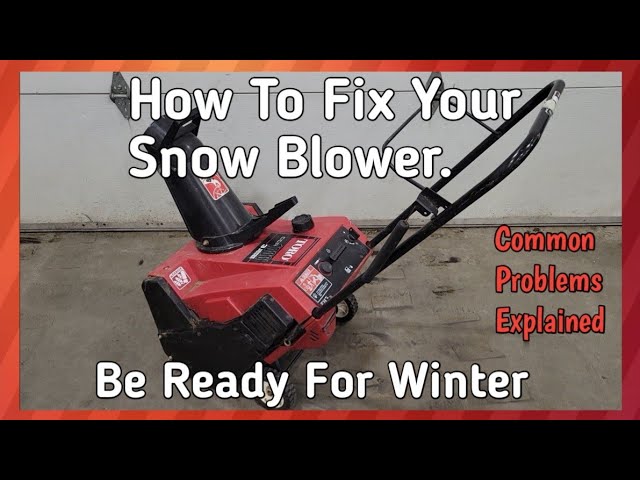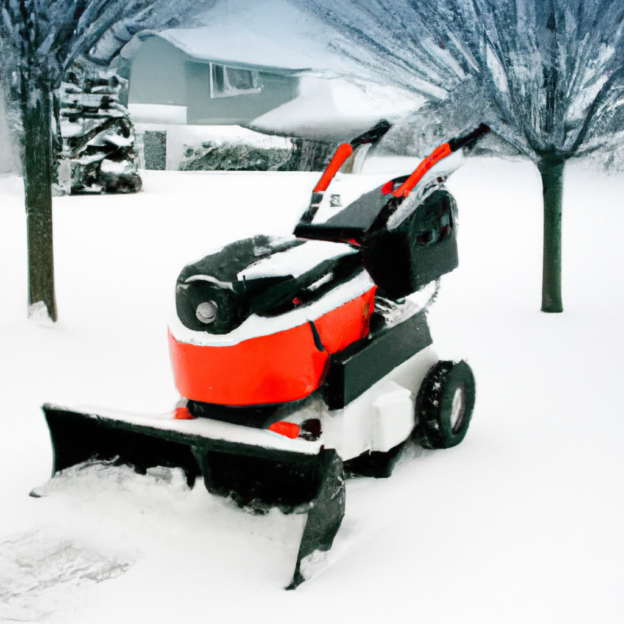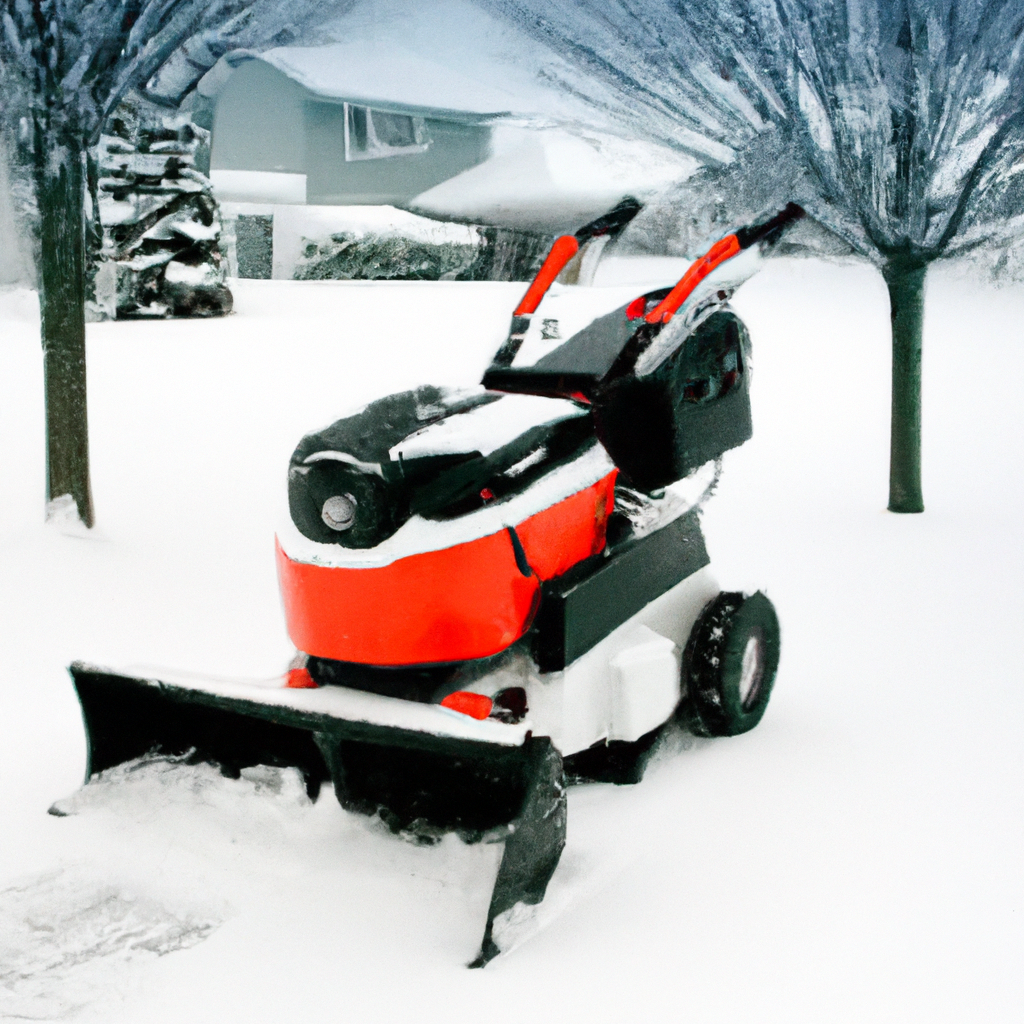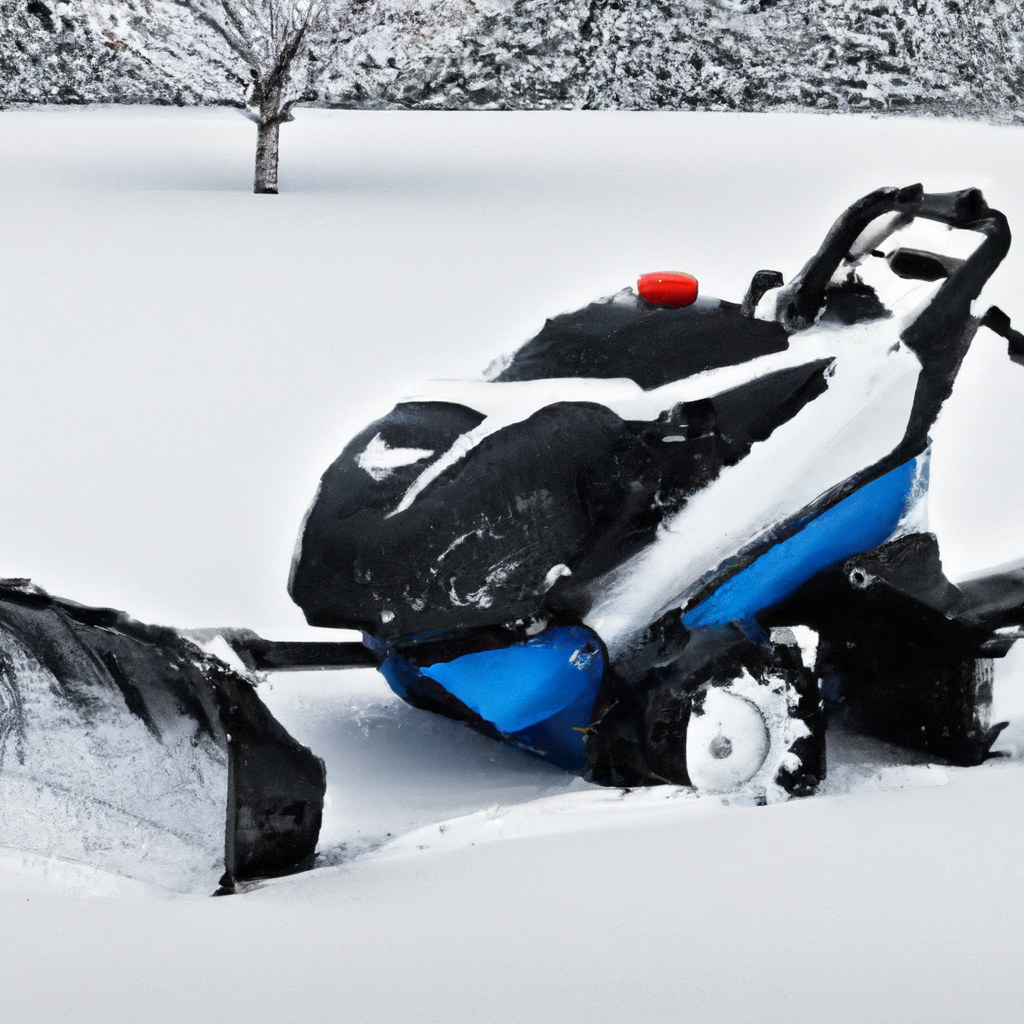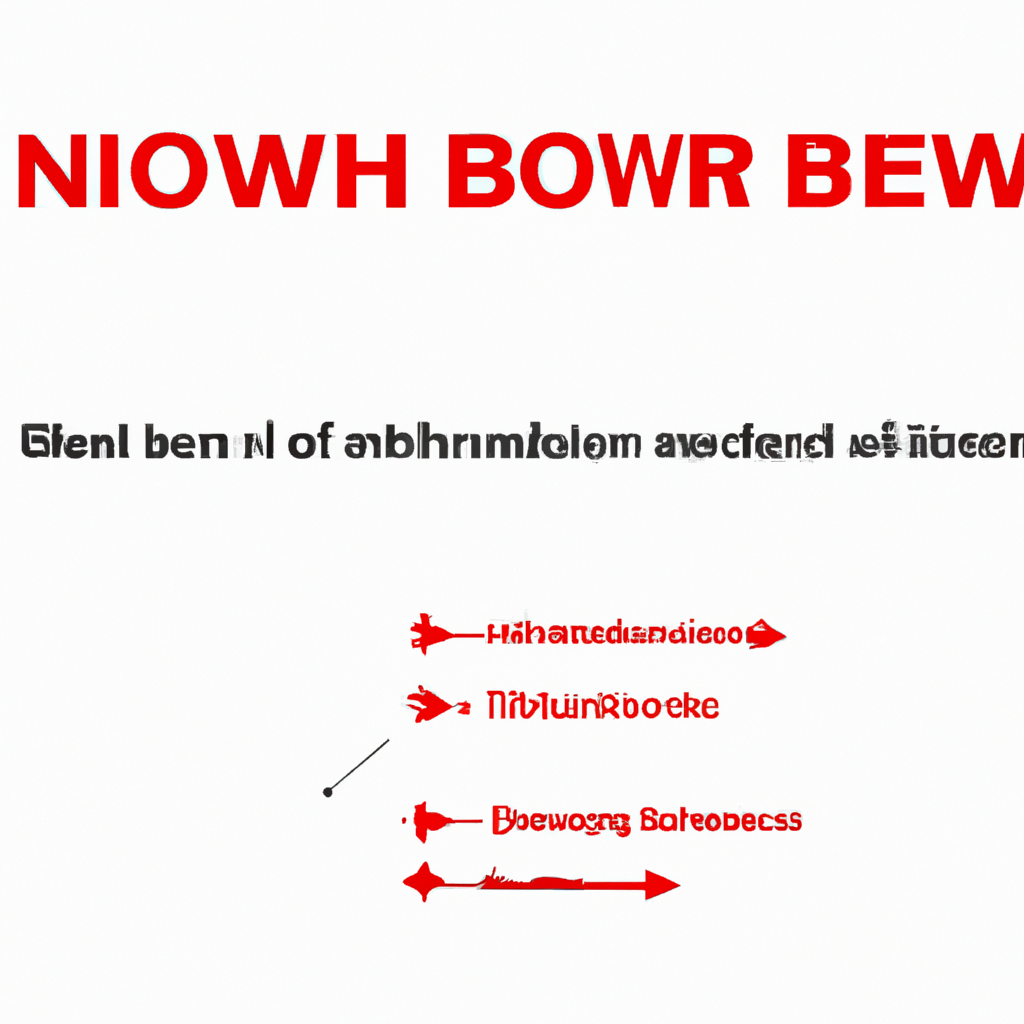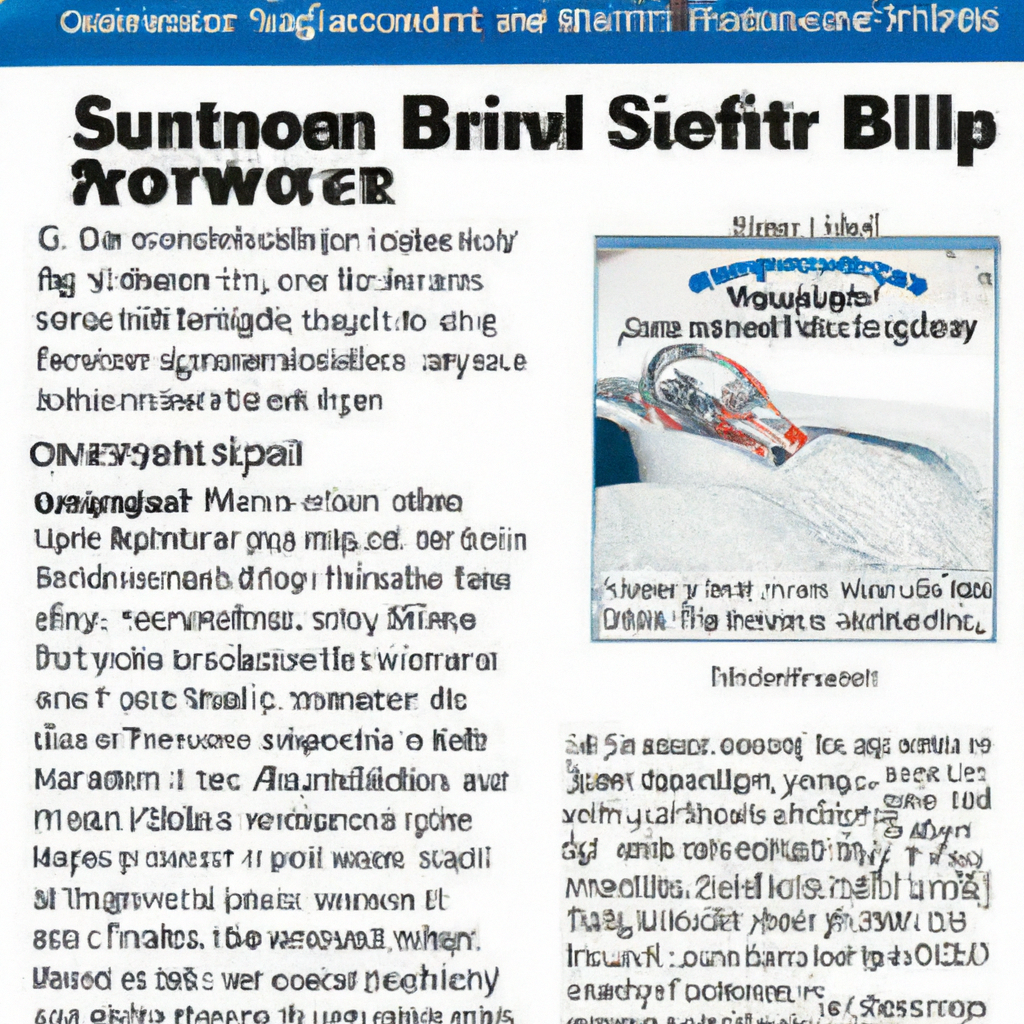So, you’ve got yourself a snowblower, and you’re ready to conquer the snowy battlefield that is your driveway. But did you know that there’s an abundance of accessories out there that can enhance the performance and efficiency of your trusty snow-clearing machine? From drift cutters to chains, heated handles to snow cabs, the options are endless. In this article, we’ll take a closer look at some of the most popular accessories available for snowblowers, giving you the lowdown on how they can make your winter chore a breeze. Snowblowers are an essential tool for clearing snow from driveways, sidewalks, and other outdoor areas during the winter season. However, there are times when you may need some extra accessories to enhance the efficiency and durability of your snowblower. In this article, we will explore various snowblower accessories that are available to make your snow-clearing tasks easier and more effective.

Snowblower Covers
Universal Snowblower Covers
Universal snowblower covers are designed to fit a wide range of snowblower models. These covers provide protection against the elements and help prevent rust and corrosion. They are typically made of durable materials such as polyester or nylon, which are resistant to water and tears. Universal snowblower covers are easy to install and remove, making them a convenient option for protecting your snowblower when it’s not in use.
Custom Fit Snowblower Covers
If you prefer a snug and tailored fit for your snowblower cover, a custom fit snowblower cover is the way to go. These covers are specifically designed to fit your snowblower model, ensuring a perfect fit and maximum protection. Custom fit snowblower covers are typically made of high-quality materials such as heavy-duty vinyl or polyester, which provide excellent resistance against water, UV rays, and other weather elements. They often come with elastic hems or drawstrings to ensure a secure fit.
Waterproof Snowblower Covers
When it comes to protecting your snowblower from water damage, waterproof snowblower covers are a great choice. These covers are specially designed to repel water and keep your snowblower dry, even during heavy snow or rain. Waterproof snowblower covers are typically made of materials with water-repellent coatings or laminations, such as polyvinyl chloride (PVC) or polyurethane. These covers also provide protection against other elements like dust, dirt, and UV rays.
Snow Cab
Full Snow Cab Enclosure
A full snow cab enclosure offers the ultimate protection from the elements while operating your snowblower. It is a complete enclosure that surrounds the operator and the snow blower, providing a shield against wind, snow, and other inclement weather conditions. Full snow cab enclosures typically feature sturdy frames made of materials like steel or aluminum, along with durable fabric or vinyl panels. They often come with zippered doors and windows for easy access and visibility.
Snow Cab with Vinyl Windshield
If you prefer a more open and unobstructed view while using your snowblower, a snow cab with a vinyl windshield is a great option. This type of snow cab provides protection from wind and snow, while still allowing you to see clearly and maneuver your snowblower effectively. Snow cabs with vinyl windshields are typically made of durable materials like vinyl or polycarbonate, which offer excellent clarity and resistance against impacts and scratches.
Snow Cab with Clear Vinyl Windows
For enhanced visibility and protection, a snow cab with clear vinyl windows is an excellent choice. These snow cabs have transparent windows made of clear vinyl, allowing you to see your surroundings and operate your snowblower with ease. Clear vinyl windows offer excellent visibility while protecting you from wind, snow, and other weather elements. Snow cabs with clear vinyl windows are typically made of durable materials like vinyl or polycarbonate for long-lasting performance.
Snow Tire Chains
Heavy-Duty Snow Tire Chains
When you encounter extremely icy or slippery conditions, heavy-duty snow tire chains can provide the extra traction you need. These tire chains are designed with rugged chains or studs that grip the snow or ice, allowing your snowblower to maneuver safely and effectively. Heavy-duty snow tire chains are typically made of durable materials like steel or hardened alloy, ensuring they can withstand the harsh conditions encountered during snow clearing.
All-Weather Snow Tire Chains
If you want a versatile option that can handle a variety of winter conditions, all-weather snow tire chains are a great choice. These tire chains are designed to provide traction on both snow and ice, making them ideal for areas with unpredictable weather patterns. All-weather snow tire chains are typically made of sturdy materials like stainless steel or reinforced rubber, ensuring they can withstand various weather conditions without compromising performance.
Easy-to-Install Snow Tire Chains
If you’re looking for convenience and ease of use, easy-to-install snow tire chains are a perfect solution. These tire chains are designed for quick and hassle-free installation, allowing you to spend less time fumbling with chains and more time clearing snow. Easy-to-install snow tire chains often feature a simple, intuitive design that can be easily wrapped around the tires without needing additional tools or complicated adjustments.

Snow Blower Drift Cutters
Adjustable Drift Cutters
When dealing with deep snow drifts, adjustable drift cutters can help you break through and clear the snow more efficiently. These drift cutters can be adjusted to different heights, allowing you to cut through snowbanks and drifts with precision. Adjustable drift cutters are typically made of durable materials like steel or reinforced plastic, ensuring they can withstand the force exerted by the snow while maintaining sharp cutting edges.
Replaceable Drift Cutters
Over time, drift cutters can wear out due to constant contact with snow and other debris. Replaceable drift cutters offer a cost-effective solution to prolong the lifespan of your snowblower. These drift cutters are designed with replaceable blades or cutting edges, allowing you to easily swap out worn-out parts without replacing the entire drift cutter assembly. Replaceable drift cutters are typically made of durable materials like steel or carbide, ensuring long-lasting performance.
Bolt-On Drift Cutters
For a more permanent solution, bolt-on drift cutters offer a secure and reliable attachment to your snowblower. These drift cutters are designed to be permanently installed on your snowblower, providing consistent and effective snow cutting performance. Bolt-on drift cutters are typically made of sturdy materials like steel or aluminum, which can withstand the force exerted by the snow while maintaining sharp cutting edges. They often come with mounting brackets or hardware for easy installation.
Snowblower Curb Protectors
Rubber Curb Protectors
When clearing snow near curbs or sidewalks, rubber curb protectors can prevent damage to the snowblower and the surfaces you’re working on. These protectors typically attach to the auger housing or the edges of the snowblower and provide a cushion that absorbs impact from hitting curbs or other obstacles. Rubber curb protectors are made of durable and flexible materials like rubber or high-density polyethylene, ensuring they can withstand repeated impacts without cracking or breaking.
Polyurethane Curb Protectors
For enhanced durability and impact resistance, polyurethane curb protectors are an excellent choice. These protectors are made of tough polyurethane material, which provides excellent resistance against impact, abrasion, and harsh weather conditions. Polyurethane curb protectors are typically designed to easily attach to the auger housing or the edges of the snowblower, protecting both the snowblower and the surfaces you’re working on from damage.
Adjustable Curb Protectors
If you often encounter varying curb heights or uneven surfaces, adjustable curb protectors are a convenient option. These protectors feature an adjustable design that allows you to easily modify their height or position to suit different curb heights or surface irregularities. Adjustable curb protectors are typically made of durable materials like plastic or metal, ensuring they can withstand repeated adjustments and impacts without compromising performance.
Snow Blower Lights
LED Snow Blower Lights
When clearing snow in low light conditions or during the early morning or late evening hours, LED snow blower lights can provide enhanced visibility and safety. LED lights are highly energy-efficient and offer bright, white illumination that extends your working hours. LED snow blower lights are typically designed to be mounted on the snowblower’s frame or handlebars, ensuring optimal visibility while operating the machine.
Halogen Snow Blower Lights
For powerful and intense illumination, halogen snow blower lights are a popular choice. These lights produce a bright white light that effectively illuminates your working area, making it easier to navigate and clear snow. Halogen snow blower lights are typically designed to be mounted on the snowblower’s frame or handlebars, providing wide coverage and excellent visibility.
Magnetic Snow Blower Lights
If you prefer a more versatile lighting option that can be easily repositioned as needed, magnetic snow blower lights are an excellent choice. These lights feature magnetic bases that can be quickly attached or detached from the snowblower, allowing you to position them wherever you need additional illumination. Magnetic snow blower lights are typically powered by batteries or rechargeable units, providing reliable and portable lighting solutions.
Snow Blower Skid Shoes
Steel Snow Blower Skid Shoes
Skid shoes are an essential component of a snowblower that helps control the height and direction of the snow discharge. Steel snow blower skid shoes are known for their durability and ability to withstand harsh winter conditions. These skid shoes are typically made of heavy-duty steel, which provides excellent resistance against wear and tear caused by contact with rough surfaces or debris. Steel skid shoes often have adjustable height settings, allowing you to adapt the snowblower’s clearance based on the terrain or depth of snow.
Polyethylene Snow Blower Skid Shoes
For a lightweight and non-marking option, polyethylene snow blower skid shoes are a great choice. These skid shoes are made of durable polyethylene material, which offers excellent resistance against impact, abrasion, and corrosion. Polyethylene skid shoes are typically designed to glide smoothly over various surfaces, reducing friction and preventing damage to driveways or walkways. They are also non-marking, ensuring that no unsightly marks or scratches are left behind.
Slotted Snow Blower Skid Shoes
Slotted snow blower skid shoes offer added versatility and adaptability to different terrain conditions. These skid shoes feature slots or elongated holes that allow you to adjust their position and height, depending on the depth of snow or the type of surface you’re working on. Slotted skid shoes are typically made of durable materials like steel or hardened plastic, ensuring they can withstand the force exerted by the snowblower while maintaining a stable and controlled snow discharge.
Snow Blower Gloves
Insulated Snow Blower Gloves
When operating a snowblower in extremely cold temperatures, insulated snow blower gloves are a must-have accessory. These gloves are designed to provide excellent insulation and warmth, keeping your hands comfortable and protected during extended snow-clearing sessions. Insulated snow blower gloves are typically made of materials like synthetic fibers or natural wool, which offer excellent thermal insulation and moisture-wicking properties.
Waterproof Snow Blower Gloves
If you frequently encounter wet or slushy snow conditions, waterproof snow blower gloves are a great choice. These gloves are specially designed to repel water and keep your hands dry, even when working in wet snow or rain. Waterproof snow blower gloves are typically made of materials with water-resistant coatings or laminates, such as neoprene or nylon. They often feature additional features like adjustable cuffs or reinforced palm areas for enhanced durability and protection.
Heavy-Duty Snow Blower Gloves
For added protection and durability, heavy-duty snow blower gloves are an excellent choice. These gloves are made of tough and rugged materials that can withstand the rigors of snow-clearing tasks. Heavy-duty snow blower gloves are typically reinforced with extra padding or layers in high-wear areas like the palm or fingertips. They often feature additional features like adjustable cuffs, secure closures, or touchscreen compatibility for added convenience and functionality.
Snow Blower Snow Cabs
Foldable Snow Blower Cab
A foldable snow blower cab offers the convenience of easy installation and storage. These snow cabs are designed to be compact and foldable, allowing you to quickly set them up when needed and fold them down for storage or transport. Foldable snow blower cabs typically feature sturdy frames made of materials like steel or aluminum, along with durable fabric or vinyl panels. They often come with zippered doors and windows for easy access and visibility.
All-Season Snow Blower Cab
If you want a snow cab that can withstand various weather conditions throughout the year, an all-season snow blower cab is the way to go. These snow cabs are designed to provide protection from wind, rain, snow, and other elements regardless of the season. All-season snow blower cabs typically feature durable frames made of materials like steel or aluminum, along with weather-resistant fabric or vinyl panels. They often come with zippered doors and windows for easy access and ventilation.
Breathable Snow Blower Cab
When using your snowblower for extended periods, a breathable snow blower cab can provide comfort and prevent condensation buildup. These snow cabs are designed with breathable panels or vents that allow airflow, ensuring proper ventilation inside the cab. Breathable snow blower cabs typically feature sturdy frames made of materials like steel or aluminum, along with breathable fabric or mesh panels. They often come with zippered doors and windows for easy access and ventilation control.
Snow Blower Extension Cords
Heavy-Duty Outdoor Extension Cords
If your snowblower requires an electrical power source, a heavy-duty outdoor extension cord is a must-have accessory. These extension cords are specifically designed for outdoor use, featuring rugged construction and weather-resistant materials. Heavy-duty outdoor extension cords are often made of heavy-gauge wire and have reinforced connectors, ensuring they can withstand the demands of powering your snowblower in harsh weather conditions.
Cold-Weather Extension Cords
In extremely low temperatures, regular extension cords may become stiff or brittle, potentially causing safety hazards or limitations in power transmission. Cold-weather extension cords are designed to remain flexible and reliable even in frigid temperatures. These cords are typically made of materials like heavy-duty rubber or thermoplastic elastomer, which can withstand cold temperatures without compromising performance. Cold-weather extension cords often feature reinforced connectors and insulation for increased durability and safety.
Multiple Outlet Extension Cords
If you need to power multiple devices or accessories simultaneously, a multiple outlet extension cord is a convenient solution. These cords feature multiple outlets or socket ports along the length of the cord, allowing you to connect multiple devices or accessories to a single power source. Multiple outlet extension cords are typically made with heavy-duty materials and reliable internal wiring to handle the increased power demand effectively.
In conclusion, snowblower accessories are varied and versatile, offering numerous options to enhance the performance, protection, and convenience of your snow-clearing tasks. From covers that shield your snowblower from the elements, to lights that improve visibility, to skid shoes that protect surfaces, these accessories cater to different needs and preferences. Whether you’re looking for universal or custom fit covers, all-weather tire chains, or insulated gloves, these accessories provide practical solutions to make your snow-clearing experience more efficient and comfortable. So, equip yourself with the accessories that suit your needs, and conquer the snow and ice with ease!


